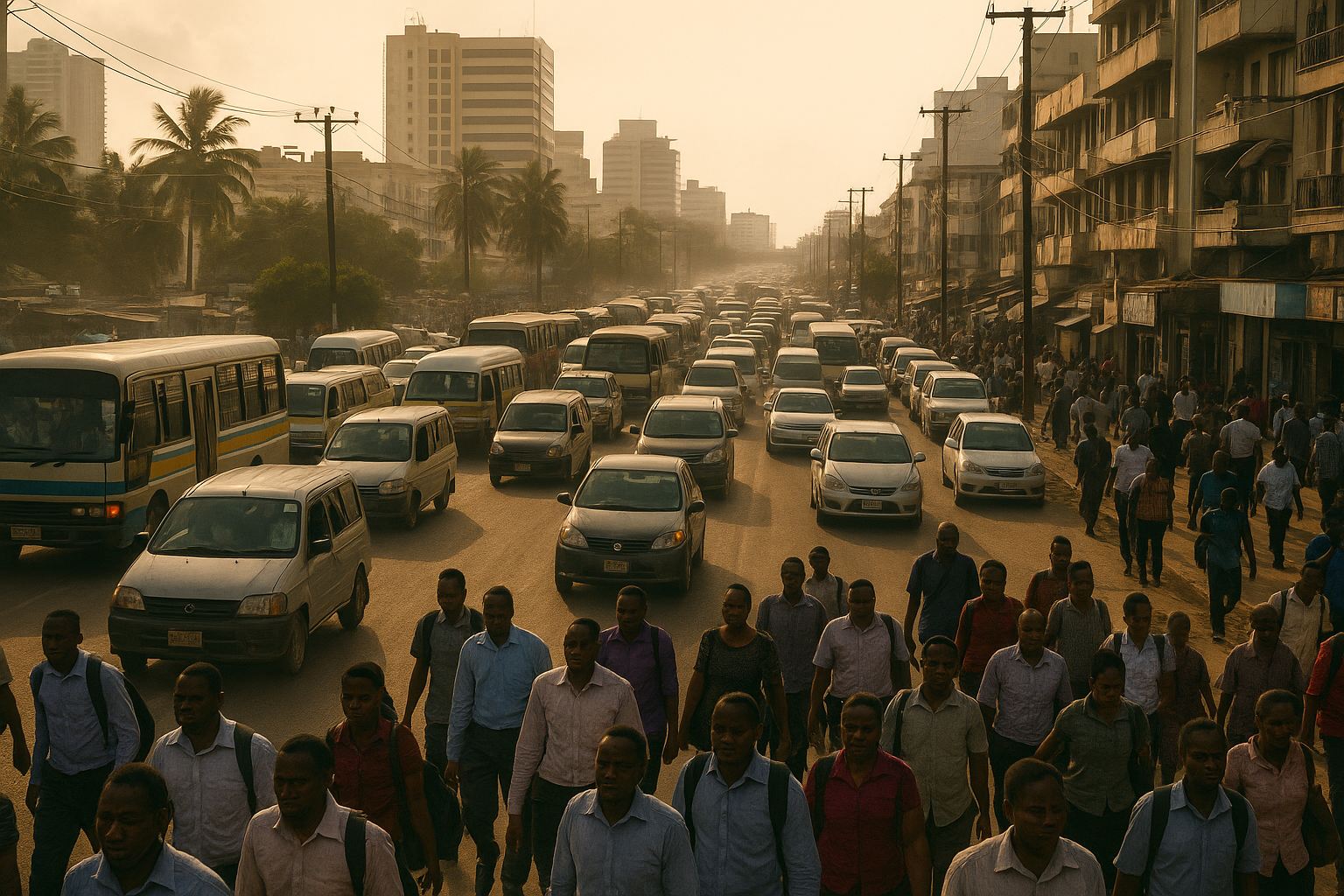Dar es Salaam’s Commuting Paradox: Higher Wages, Lower Gains from Poor Transport
A World Bank study on Dar es Salaam finds that longer commutes often lead to higher wages, but transport inefficiencies, costly transfers, and congestion sharply reduce income potential. The report warns that improving integrated, safe, and gender-sensitive public transport is key to boosting job access, reducing inequality, and supporting sustainable growth.

The World Bank’s Transport Global Department has turned the spotlight on one of Africa’s fastest-growing cities, Dar es Salaam, in a new policy research working paper that unpacks the relationship between job accessibility, commuting patterns, and the efficiency of urban transport systems. Drawing on labor economics and job search theory, the study, authored by Atsushi Iimi, connects how far and how long people travel to work, what wages they earn, and how transport inefficiencies either enable or choke off opportunities. In doing so, it brings fresh empirical evidence to longstanding concerns about African urbanization outpacing job creation. Dar es Salaam’s population ballooned from 2.3 million in 2000 to more than 6.7 million in 2020, with projections suggesting it will top 13 million by 2035. Yet job creation has failed to keep pace, leaving unemployment stubbornly high at about 25 percent in the city compared with the national average of 18.6 percent. This imbalance has sharpened interest in transport as a hidden but decisive factor shaping labor outcomes.
The Commuting Paradox
The study challenges conventional wisdom that commuting is simply a waste of time and money. Instead, it finds that commuting in Dar es Salaam functions as a gateway to better jobs. Those who travel longer distances often access higher-paying employment. Survey data gathered in 2014 and 2015 reveal that the average one-way commute is 67 minutes, and women endure longer journeys than men, 77 minutes compared with 66 minutes. Globally, women typically travel shorter distances due to household duties, but in Dar es Salaam, the opposite is true. The financial burden is heavy: transport costs consume 16 percent of women’s monthly earnings and 13 percent for men. With a third of the workforce still walking to work, nearly half using informal minibuses called dala dalas, and only a small share relying on cars or taxis, the daily commute is both a financial and physical strain.
Inefficiency that Lowers Incomes
What emerges clearly from the research is that inefficiency in the transport system is depressing wages. Workers forced to use multiple modes of transport, or those traveling during congested peak hours, consistently earn less. Mode transfers add time and hassle without bringing higher returns, and congestion restricts mobility at critical hours. Figures in the report show that while wages rise with commute length, they fall when commuters must change modes or travel during rush hour. The conclusion is stark: Dar es Salaam’s fragmented and uncoordinated mobility system undermines access to well-paying opportunities. Improving integration between modes, particularly during peak periods, could unlock significant wage gains and allow workers to reach better jobs faster.
Private vs. Public Transport Divide
A striking finding is the sharp income divide between private and public transport users. A 60-minute commute by private car or taxi is linked to wages worth about US$330 a month, compared to just US$57 for public minibus users and around US$45 for a 25-minute walk or bicycle ride. Private transport provides flexibility, speed, and wider job access, but its dominance poses a policy dilemma. If more people gravitate toward cars, Dar es Salaam risks deepening congestion, inequality, and carbon emissions. Public transport, meanwhile, remains hampered by safety concerns, unreliability, and limited coverage. For women in particular, unsafe or uncomfortable public transport discourages usage, reinforcing dependence on walking or more costly options. The paper warns that unless public transport is modernized, reliable, and better integrated with informal systems, it cannot serve as the equalizer policymakers hope for.
Gendered Mobility and Policy Choices
Gender emerges as a crucial dimension in the commuting story. Although women earn about a third less than men on average, the wage boost from longer commutes is more pronounced for women. This means improvements in transport efficiency could narrow gender wage gaps by enabling women to access better-paying opportunities. The study also stresses the importance of the “mobility of care” concept: access to schools, childcare, and health facilities reduces women’s time burdens and strengthens their ability to participate in the labor market. Proximity to these services around workplaces is especially important, correlating positively with higher wages. For women, both motorized and nonmotorized commutes yield wage benefits, though walking or cycling involves greater discomfort. Ultimately, the research reframes commuting not as wasted time but as an economic lever that can expand access to livelihoods.
The statistical backbone of the paper is robust. Instrumental variable techniques, Heckman corrections, and bootstrap tests confirm that commuting time is strongly and positively correlated with wages, with elasticities of around 1.3 to 1.5, much steeper than in developed countries. This reflects the greater hardship of commuting in Dar es Salaam and the scarcity of high-paying jobs close to home. The findings reinforce the need to view transport not as a standalone sector but as a core pillar of economic and labor policy.
The message for policymakers is unambiguous. Improving transport efficiency, integrating formal and informal systems, and tailoring interventions to women’s needs could transform commuting into a powerful engine of wage growth. At the same time, strategies must avoid locking the city into car dependency, which would worsen congestion and emissions. By reducing the disutility of commuting and expanding safe, affordable, and efficient transport options, Dar es Salaam can turn urban growth into a genuine economic opportunity. Transport policy, the study concludes, is labor market policy. For one of Africa’s most dynamic cities, how people move is inextricably tied to how they live and earn.
- READ MORE ON:
- World Bank
- Dar es Salaam
- urban transport
- public transport
- FIRST PUBLISHED IN:
- Devdiscourse










